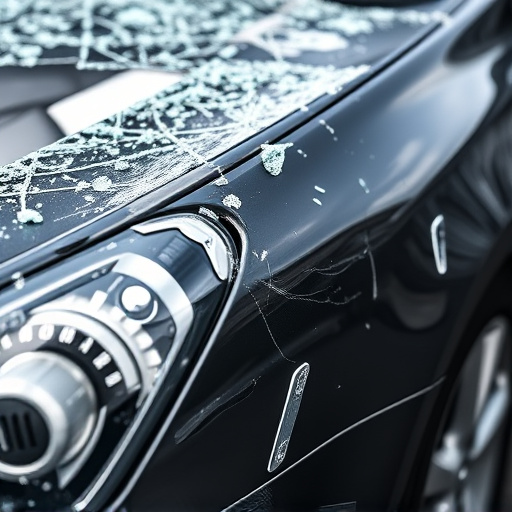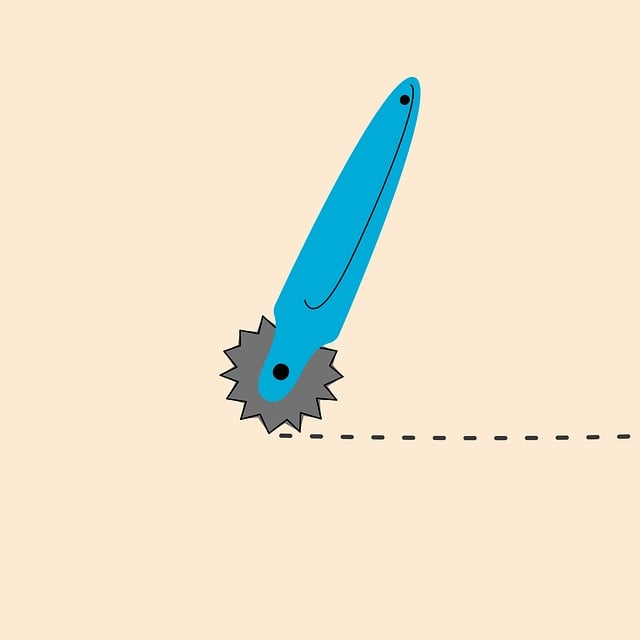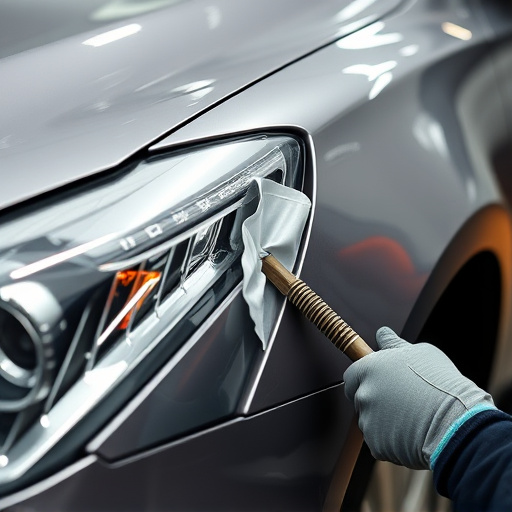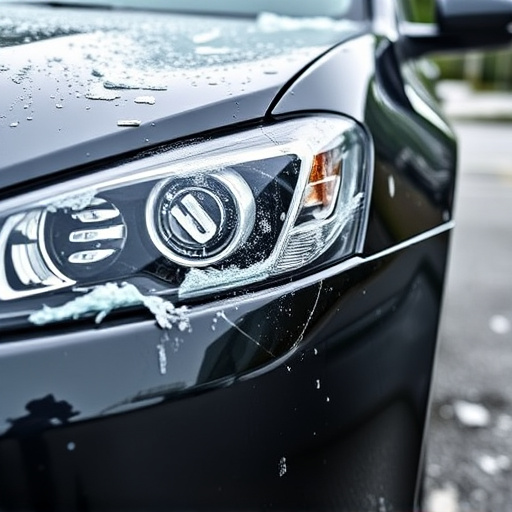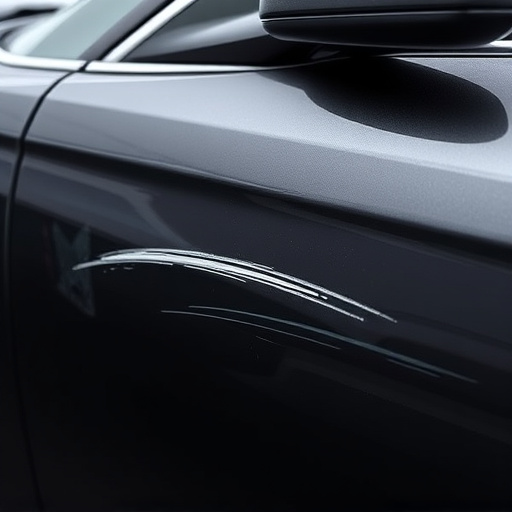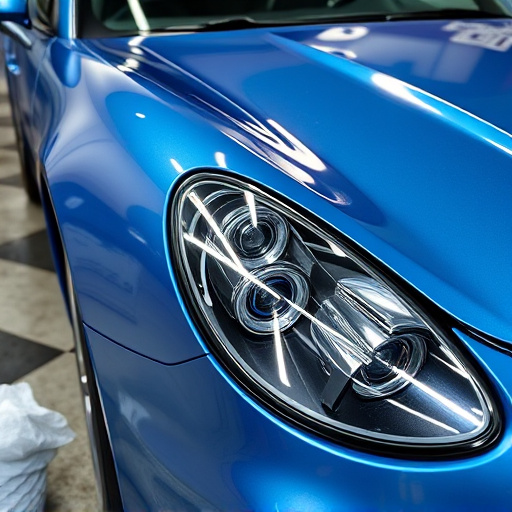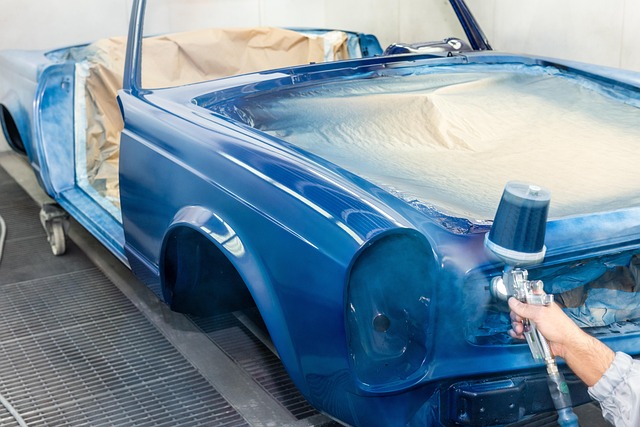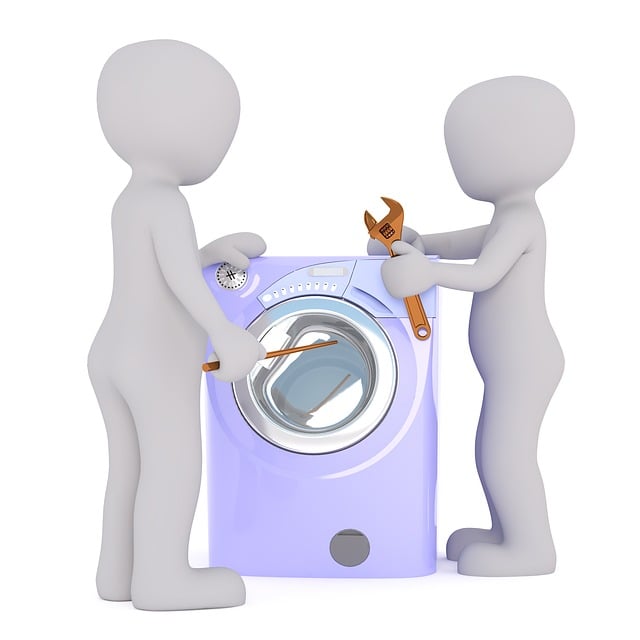Aluminum panel dent repair for vehicles like Mercedes-Benz requires specialized tools and techniques due to aluminum's softer nature. Tools include pneumatic hammers, precision dies, screwdrivers, pry bars, body fill putty, and advanced equipment for complex repairs. A DIY guide emphasizes inspection, using tools like a dent puller or hammer, smoothing with a knife, and applying filler for an even surface, offering an alternative to professional collision center services.
“Aluminum panel dent repair is a meticulous process that transforms damaged automotive surfaces. This comprehensive guide delves into the art of restoring Aluminum Panel Dent Damage, offering a practical step-by-step approach. From understanding the unique challenges of aluminum repairs to equipping yourself with the right tools and materials, you’ll discover a system designed for efficiency. Master the techniques used by professionals and learn how to effectively fix dented aluminum panels, ensuring a flawless finish.”
- Understanding Aluminum Panel Dent Damage
- Tools and Materials for Repair
- Step-by-Step Guide to Effective Fix
Understanding Aluminum Panel Dent Damage

Aluminum panel dent damage is a common issue faced by vehicle owners, particularly those with cars made from lightweight aluminum bodies, such as Mercedes-Benz models undergoing collision repair at a reputable car repair shop. These dents can range from small, shallow indentations to larger, more severe deformities, often caused by minor fender benders or accidental impacts. The challenge lies in the fact that aluminum is a softer metal compared to steel, making it more susceptible to deformation and difficult to restore without leaving visible traces.
Proper understanding of this damage is crucial for effective aluminum panel dent repair. Skilled body shop services employ specialized techniques tailored to this unique material. They use tools like pneumatic hammers and precision-cut dies to gently mold the dented area back into its original shape, ensuring minimal scarring or color changes. This meticulous process demands expertise and experience to preserve the vehicle’s aesthetics, especially for a car as meticulously crafted as a Mercedes-Benz.
Tools and Materials for Repair
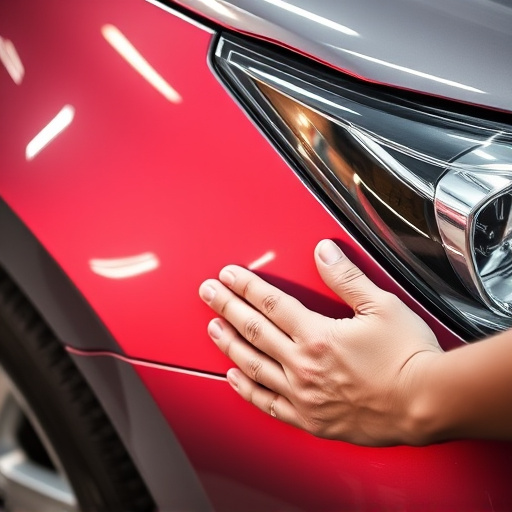
To undertake effective aluminum panel dent repair, a variety of specialized tools and materials are required. These include a set of precision screwdrivers, often with various head types to match the car’s manufacturing standards, and thin, flexible pry bars designed for delicate work. Additionally, a reliable supply of high-quality body fill or putty, primer, and paint is essential. For accurate measurements and straight lines, a metal ruler or tape measure is indispensable. Some professionals also use heat guns or guns to carefully warm up dented areas, aiding in the removal of dents without damaging the panel.
In addition to these core essentials, having access to a well-lit work area, proper ventilation, and protective gear like gloves and safety glasses can significantly enhance the repair process. For more complex cases, particularly involving Mercedes Benz repair or car scratch repair, an experienced technician might employ advanced tools such as vacuum degreasers, sanders, or even robotic welding equipment found in a collision repair center. These resources ensure precise repairs that match the vehicle’s original finish and structural integrity.
Step-by-Step Guide to Effective Fix

To successfully fix a dent in an aluminum panel, follow this step-by-step guide. Begin by inspecting the dent to assess its size and depth. This will determine the appropriate repair method. Next, gather your tools and materials, which typically include a dent puller or a hammer, a putty knife, and a coating of automotive-grade filler.
With proper protection on your work area, gently insert the dent puller into the dent’s center, applying steady pressure to lift the panel back to its original form. For deeper dents, use the hammer to carefully pry out the damaged section. Once the dent is removed, use the putty knife to smoothen any remaining indentations or uneven areas. After ensuring a perfect fit, apply the filler to even out the surface and allow it to dry according to the manufacturer’s instructions. This process, when executed correctly, offers an effective alternative to taking your vehicle to a collision center for car dent removal, providing high-quality vehicle repair services right at home.
Aluminum panel dent repair is a precise process that, when done correctly, can return your vehicle’s exterior to its original condition. By understanding the damage, gathering the right tools and materials, and following a step-by-step guide, you can effectively fix dents in aluminum panels, ensuring both aesthetic appeal and structural integrity. Remember, proper technique and attention to detail are key to achieving professional results in aluminum panel dent repair.

